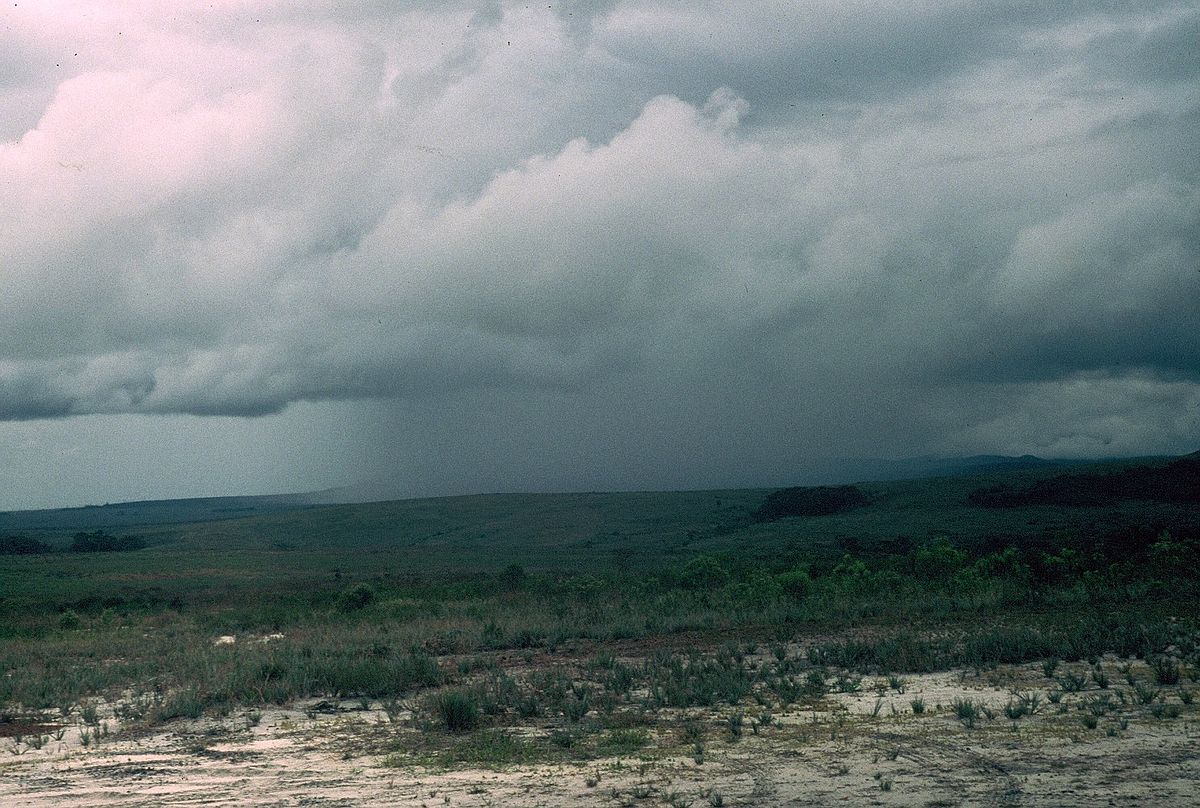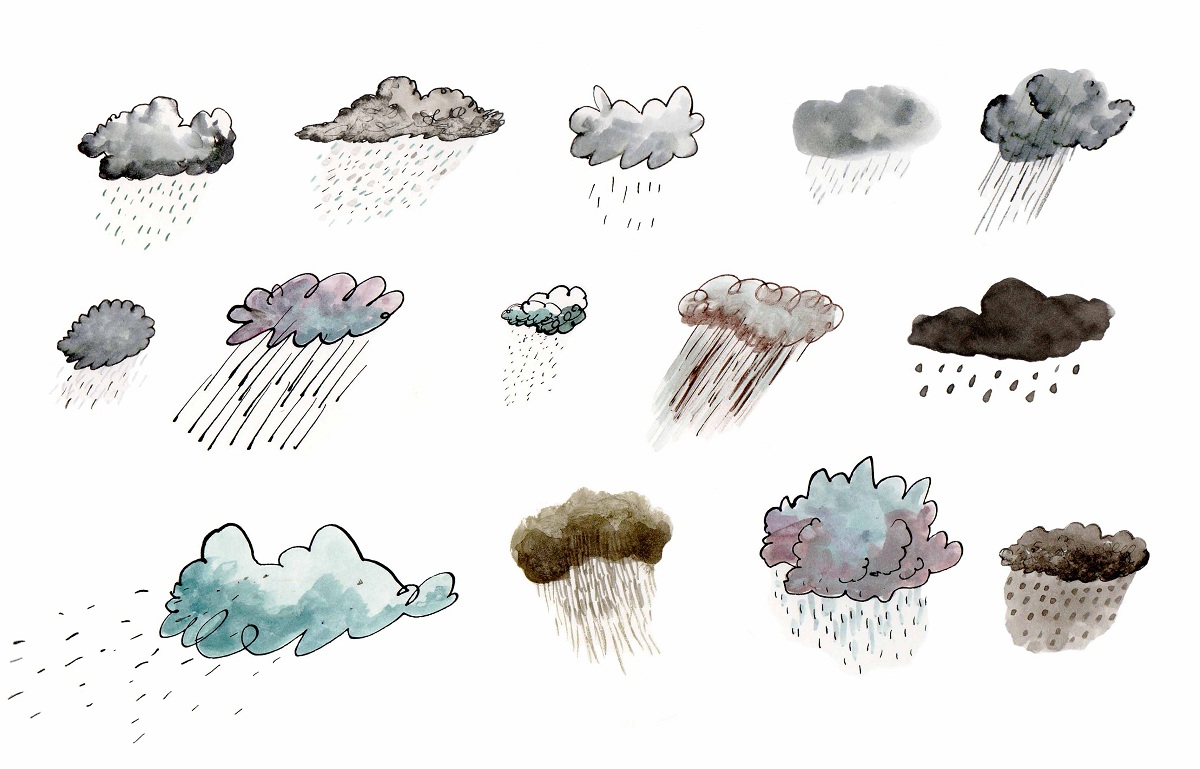
There are different types of rain, since each one has different characteristics and origin. We know that clouds are formed by a large amount of gothic water and small ice crystals that come from the change of state of water vapor has lived and solid from an air mass. When the cloud is loaded with water droplets and the environmental conditions are conducive, it starts to rain. You can get to observe different types of rains and their characteristics are different.
In this article we are going to tell you everything you need to know about the different types of rain and their characteristics.
How is rain formed

The first thing is to know how the rains are generated. We know that when the air on surfaces heats up and rises in altitude. While in the troposphere, the air decreases its temperature as the height increases. The higher we go the colder it is. Thus, when an air mass rises it encounters colder air and becomes saturated with moisture. When the air condenses, water droplets or ice crystals form, depending on the temperature of the surrounding air.
These water droplets form and join particles with a diameter of less than two microns that are called hygroscopic condensation nuclei. Being attached to these condensation numbers, the air mass does not stop rising and a cloud known as vertical development is formed. These types of clouds are usually formed by atmospheric instability. When it reaches a considerable thickness and vertical development, it hardly allows solar radiation to pass through.
For steam existing in an air mass to reach saturation, it must condense into water droplets and several conditions must be met. The first is that the air mass has been able to cool enough for the cloud to form. The second condition is that there must be sufficient condensation nuclei in the air on which the water droplets can form. Once the cloud has formed, there are conditions that are what generate the different types of rain. Two forces act on each droplet of water: that due to the drag that the upward air current exerts on it and that of the weight of the droplet itself along with the action of gravity.
When the water droplets are large enough to overcome the drag force, they fall to the ground. The longer the water droplets spend in the cloud, the larger they become. In addition, depending on the time that the droplets spend ascending and descending in the cloud and how much is the total amount of water that the cloud itself has.
Types of rain
Once we know what the origin of the rains is, we are going to see what the different types of rain are. These types occur depending on the shape and size of the drops of water that are precipitating according to the environmental conditions. We can find drizzles, showers, hail, snow, sleet, rain, etc. Let's analyze which are the main ones.
- Drizzle: It is a type of rain to take care of water droplets are quite small and can of a uniform shape. They do not tend to get the soil too wet, although it depends on other factors such as wind speed and relative humidity. If there is a lower wind speed, they can get to wet the ground a bit more.
- Showers: They are those that contain larger drops and tend to give violently. The main characteristic of showers is that they fall intensely but for a very short time. Those areas where there are places with lower atmospheric pressure, a center of low pressures is usually created, forming storms. This is the ideal place for the formation of showers. They are also related to the type of cloud known as Cumulonimbus that is generated with too much speed, which is why the water droplets acquire a large size.
- Hail and snowflakes: We know that different types of rain can also be solid. For this to happen, in the clouds there must be ice crystals formed at very low temperatures. These temperatures are around -40 degrees. Ice crystals can grow at the expense of very low temperature water droplets that freeze on them. This is how hail formation begins. They can also bond with other crystals and form snowflakes. When it reaches the right size, gravity before the rest of the work. If the environmental conditions are appropriate the precipitation will come out in solid form.
Sometimes it can happen that the organized snowflakes meet a layer of warm air in their fall and melt before reaching the ground.
Types of rain depending on the clouds

We know that depending on the type of cloud and the environmental conditions present there will be different types of rain. In this case, the most common rains They are those of the frontal, orographic and convective or stormy type. Frontal rain is one in which the clouds are associated with both warm and cold fronts. When there is a cross between a warm front and a cold front, clouds are formed and frontal-type precipitation remains.
We know that the cold front forms when a mass of cold air pushes and displaces a mass of higher temperature upwards. During the rise of the warmer air, it cools when it reaches higher altitudes and gives rise to the formation of cloudiness. In the case of a warm front, it is the hotter air mass that slides over another with a lower temperature.
When a cold front forms, the type of cloud that forms is a Cumulonimbus or Altocumulus. They tend to have greater vertical development and heavy rainfall triggers higher volumes of water. The size of the boot is much larger than those that are formed on warm fronts. On the other hand, the clouds that form in front and warm have a more stratified shape. They are usually of the type Nimboestratus, Estratus, Stratocumulus. Warm fronts generate mild types of rain such as drizzles.
I hope that with this information you can learn more about the different types of rain and their characteristics.
